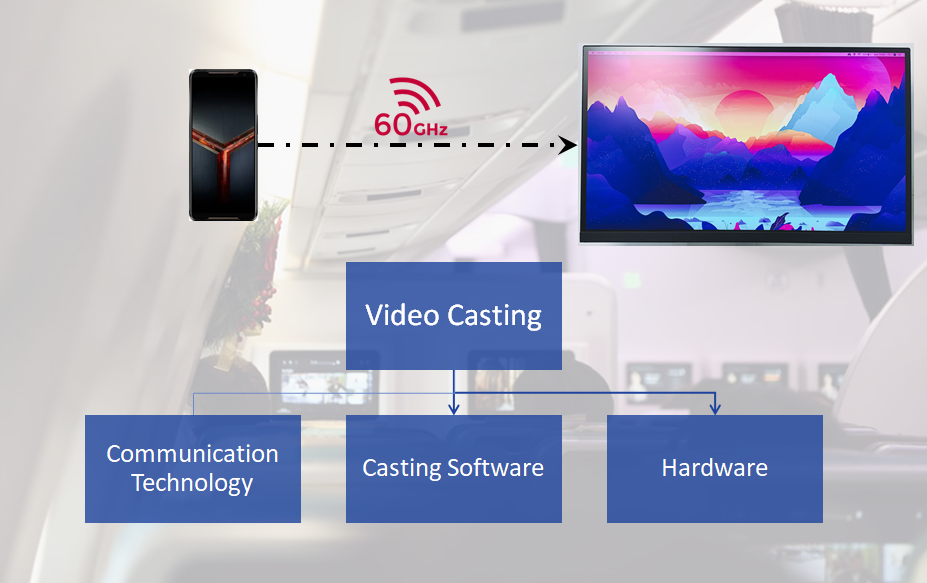Problem Statement
Passengers bring media content on personal portable devices onto airplane, and it is desirable to “cast” the media onto seat back displays in an aircraft cabin. Considering that 2.4 & 5 GHz Wi-Fi on the airplane is congested, it is desirable to leverage an alternate technology that is/will be supported in commercial, off the shelf portable devices.

Desired features of the solution:
- High resolution (4K) video bandwidth
- 400+ passenger devices in an aircraft cabin
- No interference between devices of passengers in close proximity
- Video Casting or Screen Mirroring Options
Communication Technology
The IEEE 802.11ad Standard 60GHz Wi-Fi or WiGig:
- It uses the millimeter wave frequency. Hence the range of WiGig communication is limited (a few meters and barely passes through solids)
- The high frequency allows more bandwidth => very high data rates
- The IEEE 802.11ad standard has virtual antenna sectors that discretize the antenna azimuth.
- WiGig is Highly directional which drastically reduces interference outside of the beam direction.
- The low range, high data rate fits well with the desired features of the solution
The IEEE 802.11ax – Wi-Fi 6 and Wi-Fi 6E
- 2.4GHz, 5GHz, and 6GHz (5925-7125MHz) bands are available
- Maximum theoretical speed of Wi-Fi 6E:
- mobile phone chip 3.6Gbps
- router chip 5.4Gbps to 10.8Gbps
Simulation of WLAN propogations:
- Accurate link-level model to determine achievable rates for videocasting
- Accurate interference model
Casting Software
Casting Methods being tried out:
- DLNA
- RTSP
- WebRTC
Casting Hardware
Commercially off the shelf devices must be capable of using our solution.
- By 2019, the flagship Asus phones have WiGig capability and the flagship phones of Samsung and Apple have been equipped with Wi-Fi 6
- Wi-Fi 6E chips supporting mobile phones is expected to be concentrated on the upcoming Qualcomm Snapdragon series
Some examples of the mobile devices in the market in 2020 are:





